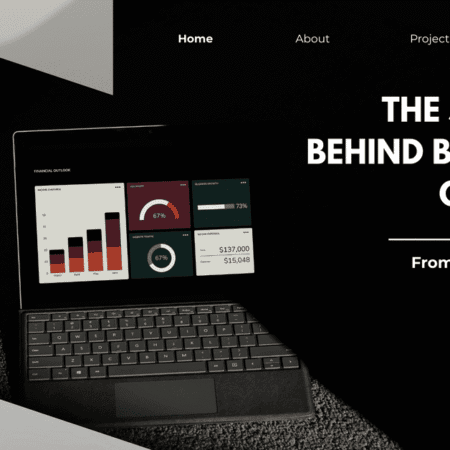If you’re asking yourself “Can I trade in a financed car?” – the answer is absolutely yes. This is one of the most common questions I hear from car owners who want to upgrade their vehicle but still have payments remaining on their current loan. The good news is that millions of drivers successfully trade in financed vehicles every year, and with the right knowledge, you can too.
Having helped countless clients navigate financed car trade-ins, I can tell you that while the process is slightly more complex than trading in a paid-off vehicle, it’s completely manageable when you understand the key concepts and prepare properly.
How Trading in a Financed Car Actually Works
When you trade in a financed car, you’re essentially selling your current vehicle to the dealership while simultaneously purchasing a new one. The dealership handles the loan payoff process, but here’s the crucial part: your existing loan doesn’t simply disappear. The remaining balance must still be paid off, either through the trade-in value or by rolling it into your new loan.
The process typically unfolds like this: The dealer appraises your current vehicle and makes an offer. They then contact your lender to determine your exact payoff amount. If your car’s trade-in value exceeds what you owe, you have positive equity that can be applied toward your new purchase. If you owe more than the car’s worth, you have negative equity that needs to be addressed.
Understanding Positive vs. Negative Equity
The concept of equity is fundamental to understanding financed car trade-ins. Equity represents the difference between your car’s current market value and your remaining loan balance. This difference determines how smooth your trade-in process will be.
Positive Equity Scenarios
If your vehicle is worth $15,000 and you owe $12,000, you have $3,000 in positive equity. This is the ideal situation for trading in a financed car. The dealer will pay off your $12,000 loan and apply the remaining $3,000 toward your new vehicle purchase, effectively giving you a $3,000 credit.
Positive equity typically occurs when you’ve owned the car for several years, made substantial down payments, or purchased a vehicle that holds its value well. According to Progressive’s trade-in guide, having positive equity makes the trade-in process straightforward and financially beneficial.
Negative Equity Challenges
Negative equity, also called being “upside-down” or “underwater” on your loan, occurs when you owe more than your car’s current value. If you owe $18,000 but your car is only worth $15,000, you have $3,000 in negative equity.
This situation is more common than you might think, especially with newer vehicles that depreciate quickly or when minimal down payments were made. Research from Chase Bank’s auto education center shows that negative equity situations require careful consideration but are definitely manageable.
Your Options When Trading in a Financed Car

Option 1: Roll the Balance Into Your New Loan
The most common approach for handling negative equity is rolling the remaining balance into your new car loan. Using our previous example, if you owe $3,000 more than your car’s worth, that amount gets added to your new vehicle’s loan amount.
While this keeps you moving forward with a new car, it does mean starting your new loan with immediate negative equity and higher monthly payments. At Personalized Blog, we’ve seen this work well for drivers who need reliable transportation immediately but should be approached cautiously.
Option 2: Pay the Difference Upfront
If you have the cash available, paying the negative equity difference upfront can be the smartest financial move. This keeps your new loan amount lower and prevents you from carrying old debt into your new purchase.
Option 3: Wait for Better Equity Position
Sometimes the best choice is patience. Continue making payments on your current vehicle until you reach positive equity or at least reduce your negative equity to a more manageable amount.
Essential Documents for Trading in a Financed Car
Successful financed car trade-ins require proper documentation. Gather these items before visiting the dealership:
- Primary Documentation:
Your driver’s license, current vehicle registration, and proof of insurance are non-negotiable requirements. You’ll also need your loan account information, including the lender’s contact details and your current payoff amount. - Supporting Materials:
Maintenance records demonstrate that you’ve cared for the vehicle, potentially increasing its trade-in value. Keep all keys, remotes, and the owner’s manual together – missing items can reduce your trade-in offer. - Title Considerations:
If you still owe money on the car, your lender typically holds the title. The dealership will work directly with your lender to handle the title transfer, but you should verify this process beforehand.
Timing Your Financed Car Trade-In
Strategic timing can significantly impact your trade-in experience. End-of-month, quarter, or year periods often provide the best negotiating opportunities as dealers work to meet sales quotas and may offer more competitive trade-in values.
Consider your loan’s payment schedule as well. If you’re close to paying off the loan naturally, it might make sense to finish the payments and trade in a paid-off vehicle instead. However, if you need a more reliable vehicle immediately, don’t let loan payments prevent you from making a necessary upgrade.
Impact on Your Credit Score
Many people worry about how trading in a financed car affects their credit. The good news is that the trade-in process itself doesn’t directly impact your credit score. The dealer’s appraisal of your vehicle doesn’t require a credit check.
However, applying for a new car loan will result in a hard credit inquiry, which can temporarily lower your credit score by a few points. If you’re shopping around for the best loan terms, try to complete all applications within a 14-45 day window, as credit scoring models typically count multiple auto loan inquiries in this timeframe as a single inquiry.
Maximizing Your Trade-In Value

Getting the best possible trade-in value starts with preparation. Clean your car thoroughly inside and out – first impressions matter significantly in trade-in appraisals. Address minor cosmetic issues like scratches or dents if the repair cost is reasonable, as these small investments often pay for themselves in higher trade-in values.
Research your vehicle’s value using resources like Kelley Blue Book or Edmunds before visiting the dealership. This knowledge helps you negotiate more effectively and recognize fair offers. Remember that trade-in values are typically lower than private sale prices, but the convenience and tax benefits often offset this difference.
Common Mistakes to Avoid
Don’t focus solely on monthly payments when evaluating trade-in deals. Dealers can manipulate payment amounts by extending loan terms, which may result in paying more overall. Instead, negotiate the trade-in value and new car price separately.
Avoid rolling excessive negative equity into new loans repeatedly. This creates a cycle of perpetual negative equity that becomes increasingly difficult to escape. If you have substantial negative equity, consider whether the trade-in is truly necessary or if waiting would be more financially prudent.
When Trading in Makes Sense
Trading in a financed car makes excellent sense when you have positive equity, need more reliable transportation, or want to take advantage of manufacturer incentives that exceed your negative equity amount. It’s also practical when your current vehicle requires expensive repairs that exceed its value.
However, if you’re simply bored with your current car and have significant negative equity, it might be worth reconsidering. The financial impact of rolling substantial negative equity into a new loan can create long-term financial strain.
Trading in a financed car is not only possible but often the most practical way to upgrade your vehicle. The key is understanding your equity position, preparing proper documentation, and making informed decisions about handling any negative equity.
Whether you have positive equity to apply toward your new purchase or need to address negative equity through rolling balances or upfront payments, dealers handle financed trade-ins routinely. With proper preparation and realistic expectations, you can successfully navigate this process and drive away in the vehicle that better meets your current needs.
Remember that every situation is unique, and what works for one person may not be ideal for another. Take time to calculate your equity position, understand your options, and make the choice that aligns with your financial goals and transportation needs.








No Comment! Be the first one.